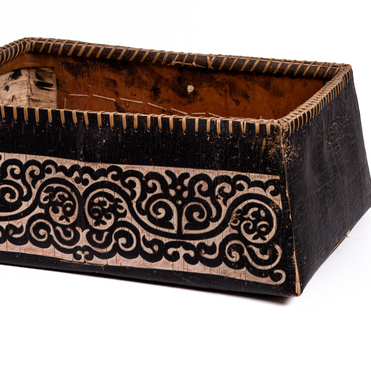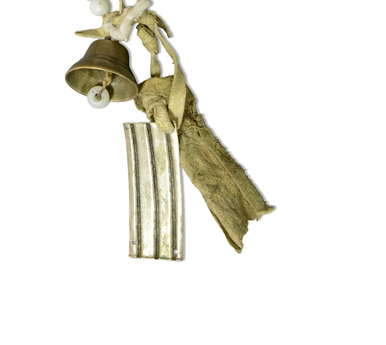Each shaman had their own savan helping spirits, who were embodied in sculptural or other forms. This savan belonged to the famous Ulchi shaman Alexander Kotkin, and after his death was passed on to the shaman Ekaterina Obertalina (1914–2005) from the village of Dudi, Ulchski district, Khabarovsk Krai.
The savan on display “comprised” several helping spirits: a flying muduli dragon, the Edekhe spirit, a second dragon in the form of a snake, as well as the Buchu and Masi savans — they were placed at the bottom. The latter were the main assistants of the Ulchi shamans, they were part of a special group of ayami spirits that drove away evil spirits and helped to return to the patient their saved soul.
Most often a shaman summoned the masi spirit and explained it by the fact that it was “more active”, flying fast, while the buchu spirit “guarded the shaman at home”. In the opinion of shamans, masi was less stroppy and brought a lot of good to people.
The shaman Alexander Kotkin referred to his spirits masi and buchu as “celestial”. He said he got them from his heavenly father patron. Alexander’s dragons are different. The main one was the one that could fly, a smaller dragon, in the form of a snake, walked on the ground.
The edekhe savan accompanied a person until the end of his life. The main roles of helping spirits during the kamlanie are: to find the way on which evil spirits drag the soul of the sick; to fight them, to free the soul; to deliver it to the sick without harming it; to guard the shaman himself on the way.
The spirits fought the devils with whatever they could — teeth, claws, and some with weapons. Yet the shaman himself was not inactive. Kotkin had a huge iron net, which he spread out and caught the devil with it. According to the shaman, in fact, it was the celestial master himself, the patron, who helped him in the kamlanie.
The exhibit was made to cure chest pain of its first owner. The spirits depicted helped to cure the patient and began to serve the shaman in the future, “killing evil spirits”. The metal used to make the savan testifies to its special power. This exhibit together with the costume and other shamanic accessories belonging to Ekaterina Obertalina were acquired after her death during an ethnographic expedition of the Grodekov Museum.



